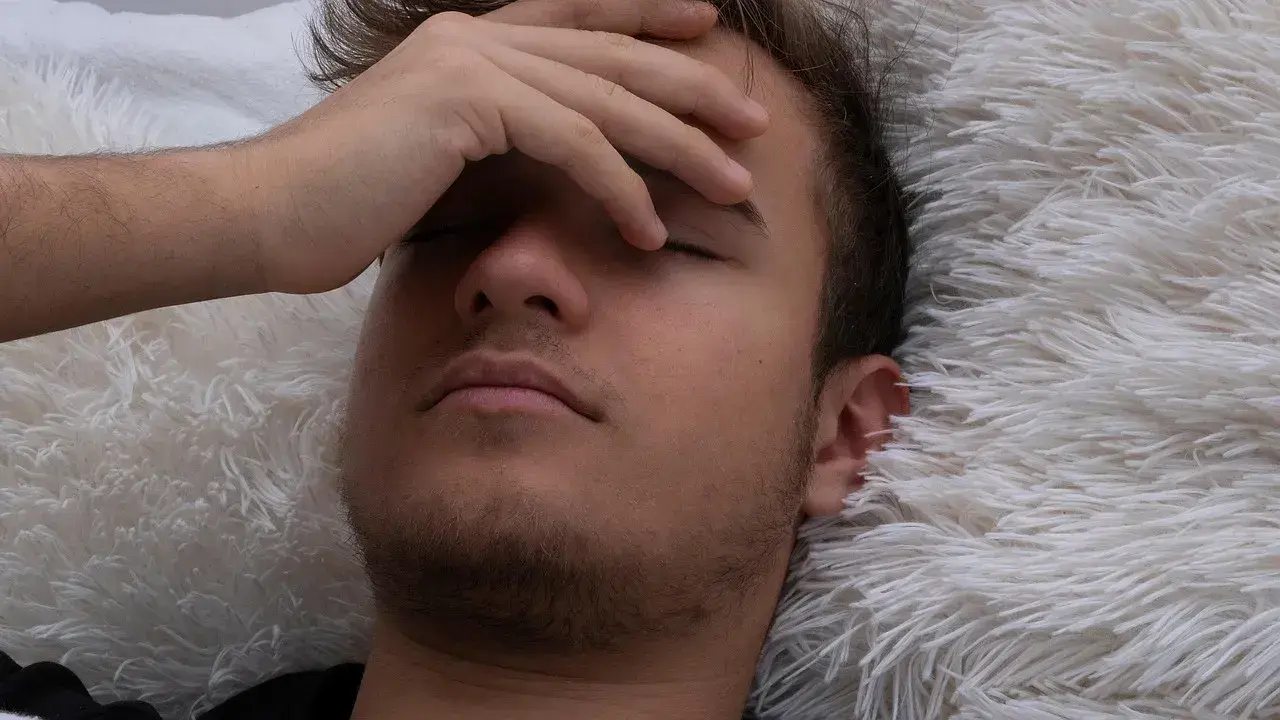Many people don’t connect the dots between their back pain and discomfort in the groin. And sciatica? It usually gets blamed for leg pain or maybe tingling down the foot, but groin pain? That’s not the first thing that pops into anyone’s mind.
But here’s the thing: nerve pathways aren’t always predictable. The body plays tricks. So if you're dealing with both sciatic pain and unexplained groin discomfort, it might not be two separate issues, it could be the same one just showing up in two places.
Let’s break this down.
Can Sciatica Cause Groin Pain?
Yes. But not always. Still, when it does, it usually throws people off.
Sciatica happens when the sciatic nerve gets compressed or irritated. This nerve starts in your lower back and runs through the hips, buttocks, and legs. While it doesn’t directly run through the groin, the pain can radiate or refer to that area due to how nerves communicate.
This is called referred pain, pain that shows up in a spot that’s not the actual source. If the compression affects nearby nerve roots or muscles that connect to the groin, you may feel it there too.
You might notice:
-
A deep ache or burning feeling in your inner thigh
-
Groin pain that flares up with lower back pain
-
Tingling or numbness in the groin or upper thigh area
-
Pain that gets worse after sitting or standing for a long time
Now, is groin pain a classic symptom of sciatica? No, it’s not a textbook. But it’s not rare either, especially if other symptoms of sciatica are hanging around.
Sciatica vs. Groin Pain: What’s the Difference?
People often confuse sciatica-related groin pain with direct groin injuries or conditions. Here’s why it matters: the causes are different, and so is the treatment.
Before jumping into comparisons, here’s a quick reality check: lifetime incidence of sciatica ranges from 10% to 40%, with about 1% to 5% affected each year. That’s not exactly rare. And a chunk of these cases involve symptoms that reach beyond just the back or legs.
Common Causes of Groin Pain (Non-sciatic):
-
Groin strain or pulled muscle
-
Hernia
-
Hip joint problems (like labral tears)
-
Kidney stones
-
UTIs or reproductive organ issues
-
Inguinal nerve irritation
On the other hand, sciatica-related groin pain is more about nerve signaling gone wrong. If the lower lumbar or upper sacral nerve roots (like L2, L3) are involved, it can mimic groin pain. The nerves might not be directly injured, but they’re “wired” close enough that inflammation or compression sends faulty signals.
And here's where most get it wrong: they treat groin pain as a local issue, icing it, stretching it, resting. But if it’s referred to from the back? That won’t fix it.
How Sciatica-Related Groin Pain Differs from Other Causes
|
Symptom/Trigger |
Sciatica-Related Groin Pain |
Muscle Strain or Hernia |
|
Radiates down the leg |
Often present |
Rare |
|
Starts in the back or buttocks |
Common |
Not typical |
|
Gets worse with coughing/sneezing |
Yes |
Sometimes |
|
Improves with back treatments |
Usually |
No |
|
Felt after sitting for long periods |
Very common |
Rare |
|
Local swelling |
Uncommon |
Common |
How Sciatica Can Lead to Groin Pain (If at All)
Let’s get one thing straight: groin pain isn’t a primary symptom of sciatica. But the nervous system doesn’t care about neat lines and tidy zones.
Here’s how it can happen:
When the L2 to L4 nerve roots, which contribute to the femoral and obturator nerves, are irritated, they can create sensations in the front of the thigh, pelvis, and, yes, the groin. The connection’s not direct, but it’s real.
What might cause this nerve root irritation?
-
Herniated disc pressing against the upper lumbar nerves
-
Degenerative disc disease
-
Spinal stenosis
-
Sacroiliac joint dysfunction
-
Piriformis syndrome (indirectly)
These nerves pass close to the groin muscles. So when they misfire, pain shows up in spots that aren’t technically injured.
Spotting this connection:
-
Does the pain travel? That’s a hint.
-
Do back stretches ease your groin pain?
-
Do flare-ups happen after long drives or sitting?
If yes, your groin pain might not be about your groin at all.
Common Symptoms: Is It Sciatica or Something Else?
Some groin pains are silent red flags for deeper issues. Others are straightforward injuries. Knowing which is which can save you from wasting time and maybe from serious complications.
Here's what sciatica symptoms often include:
-
Sharp or burning pain that travels from your back to your buttocks and leg
-
Numbness or pins-and-needles along the nerve path
-
Weakness in one leg or foot
-
Pain is worse when sitting or standing too long
-
Pain that eases slightly with walking or stretching
-
One-sided symptoms (mostly)
Now, groin pain that’s caused by something else? It’ll look and feel different.
Other possible causes of groin pain:
-
Hernia: You’ll feel a bulge near the pubic bone, especially when coughing or lifting
-
Hip arthritis: Stiffness, clicking, deep joint pain during movement
-
UTI or pelvic infection: Burning urination, fever, pelvic cramping
-
Muscle strain: Tenderness, bruising, sharp pain during certain movements
Ask yourself:
-
Does stretching my back help?
-
Does my pain spread to other parts?
-
Did the pain start suddenly after lifting or twisting?
-
Is there a visible bulge?
If the answer leans toward sciatica-related triggers, the root issue is probably in your spine, not the groin.
When to See a Doctor for Groin Pain and Sciatica
Don’t wait it out if:
-
You can’t walk without limping
-
Pain keeps getting worse
-
You have numbness in the saddle area
-
Your bowel or bladder control changes
-
Pain wakes you up at night consistently
It could be something more serious, like Cauda Equina Syndrome. Rare, but needs emergency care.
Treatments for Sciatica-Related Groin Pain
If this pain’s sticking around? It’s time to do more than rest and hope.
Start with basic options, but know when to escalate. Here’s the breakdown.
1. Home Treatments
Great place to start.
-
OTC pain meds like ibuprofen or naproxen
-
Heat pads for tight muscles
-
Cold packs for inflammation
-
Gentle yoga or targeted stretching
-
Avoiding long sitting spells
-
Sleep with a pillow between or under your knees
2. Physical Therapy
Not just stretches. This is targeted.
-
Manual therapy
-
Strength training
-
The McKenzie method for disc pain
-
Dry needling or massage techniques
-
Postural re-education
Your PT should address the spine, hips, and nerves. Not just the sore spot.
3. Injections
When pain is stubborn and does not respond.
-
Corticosteroid injections: Reduce inflammation
-
Nerve block: Temporarily shuts down pain signals
-
PRP (Platelet Rich Plasma): Boosts healing, especially if injuries are involved
Done under image guidance for accuracy. Not a cure, but it helps break the pain cycle.
4. Advanced Imaging
If things don’t add up, get imaging.
-
MRI for discs and nerve roots
-
CT scan for bony changes
-
Ultrasound for hernias or groin issues
Essential if symptoms persist or worsen.
5. Surgery
Last resort, but sometimes necessary.
-
Microdiscectomy: Removes herniated disc material
-
Laminectomy: Opens space for nerves
-
Foraminotomy: Widens nerve exit holes
-
Facetectomy: Trims arthritic joints
Only when conservative care doesn’t help after several months.
Final Thoughts
Groin pain from sciatica isn’t common, but it’s real. Nerves don’t always follow the rules. If your pain travels, lingers, or keeps coming back, it might not be your groin at all. Look at the spine. Treat the source.
Don't wait for it to vanish. Understand it. Handle it. Get it checked if it’s not improving.
अक्सर पूछे जाने वाले प्रश्नों
Can sciatica pain feel like a pulled groin muscle?
Yes, it can mimic muscle pain in the groin, especially if nerve roots near the upper lumbar spine are irritated.
How do I know if my groin pain is nerve-related?
If it comes with tingling, numbness, or weakness in the leg, or travels from your back, it may be nerve pain, not muscular.
Does walking help sciatica-related groin pain?
It often does. Gentle walking reduces nerve pressure and encourages blood flow, but stop if pain worsens.
Can a herniated disc cause groin pain?
Yes, especially if the herniation presses on L2-L4 nerve roots, which send signals to the groin area.
What doctor should I see for sciatic groin pain?
Start with a primary care doctor. From there, you may be referred to a spine specialist, neurologist, or physiotherapist.
लेखक






